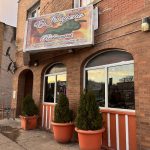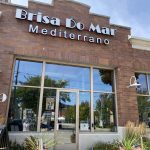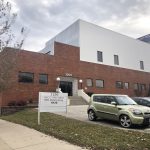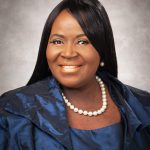Going home
To say I own a lot of books would be an extreme understatement. Not until I was getting ready to move, did I think perhaps there were some books I could actually let go of. So, one by one, I pulled them off the shelves, stacked them up, and sat in front of them to sort through those that would not be making the move with me. And, in a typical English major sort of way, I was sucked into them all over again.
As I looked at the enormous stack before me, I found it impossible to part with any of them, with one exception. There was one title I had three copies of – Wallace Stegner’s Crossing to Safety. I selected the best copy out of the three and I put the other two on my discard pile. Three copies WOW! This must be some sign, some indication that it was time to read this particular book.
If I was going to read Stegner, I was going to read everything I had of his. Already my plan to eliminate books had somehow turned itself into a search for books. By the end of the evening, Angle of Repose, All the Little Live Things, The Big Rock Candy Mountain, Where the Bluebird Sings to The Lemonade Springs, and a biography, Wallace Stegner: His Life and Work, were on my desk.
I began with Crossing to Safety, a novel about the turbulent friendship of two UW-Madison professors and their wives. The story was subtle and beautiful and by the end, I was obsessed with Stegner and his writing.
Angle of Repose was the second book I chose. I began reading the book in Wisconsin, but took it with me when I traveled to California, not far from where the book takes place. The California landscape came alive around me while I read Stegner’s descriptions of its mountains, fog, trees and its hot, dry, dusty nature. Stegner was writing “place” as if it was a character, and it was a character critical to the story. Though I finished Angle of Repose months ago, a particular sentiment from the book seems to have taken up lodging in my brain, and I find, in quiet moments, I am turning it over and over.
Stegner, wrote, “I wonder if ever again Americans can have that experience of returning to a home place so intimately known, profoundly felt, deeply loved, and absolutely submitted to? It is not quite true that you can’t go home again. I have done it, coming back here. But it gets less likely, we have had too many divorces, we have consumed too much transportation, we have lived too shallowly in too many places.”
“We have lived too shallowly in too many places.” This single line has nudged me to question where my “place,” is, and why a sense of fidelity to it is important. After my own divorce, I questioned whether I could ever regain the sense of a home place that felt authentic to me.
With the help of Michael Fields Agricultural Institute, they began to restore nutrients to the soil and work toward organic certification. Their optimism for the place was contagious, and attracted friends along the way. Today, these friends freely share their talents and secrets for making farm life work.
Grace Note Farm, run by Tracey and Dave Hall, is a neighboring farm, six miles away. The two farm families share daily life in a symbiotic relationship. It is not unusual for farm and kitchen implements, unique to their lifestyle, to go back and forth between the two homesteads. They order seeds together and grow seedlings for one another. Using Schimelfenyg’s kitchen mill, they grind grain together in her kitchen and in turn, they separate milk and cream and bulk grocery orders in Halls’s kitchen. When one of their goat’s dies, or the chickens eat all of the new broccoli seedlings, they console each other over the phone. An extension of this relationship has developed into a small soap making business called Roseberry Soap. The soap is named after Schimelfenyg’s first goat, Rose, and Hall’s first goat, Berry.
Like any other life, there is a bevy of other characters present. There is Al, who meticulously maintains his garden, Jo, the ready reference for animal care, Beth the bread baker, and Mary who makes goat milk mozzarella. And, at the end of a long summer day of work, there are potlucks with Dave and Michelle.
There are children too. The birth of the Schimelfenyg’s two daughters, Maya and Sylvie, and their son, Bryce, meant they needed to downsize their animal keep. Today they have 15 laying hens, 6 French Alpine goats, and, what Schimelfenyg says is, “enough turkey and chicken to fill their freezer for one year.”
Certainly for many, this type of place would require too much of them. But for the Schimelfenyg’s, the beauty of their life is intrinsically linked to their deep sense of place. They know that this place was here before them, and will be here after they are gone. But they also know that in pouring their lives into this place, their lives are included in its life and it will bear the mark of their movements well into the future.
The future comes especially fast when one has children. Just as the Schimelfenyg’s home and garden have grown to accommodate their children, there are others, myself included, whose lives change when their children venture out on their own. Left with empty space, some will encounter transition of place along with transition of life circumstance.
Such is the case of Pat Wilborn and his wife Amy Otis-Wilborn. The Wilborns live near the Lake Michigan harbor in Port Washington. When their children moved out, they made use of an empty room in a surprising way that has brought new meaning to their home and their life; even to their sense of place in their community. The Wilborns made the unusual decision to renovate one former bedroom in their home by adding two aquarium tanks and stocking them with yellow perch. This is not your typical home renovation project, nor are these your typical aquariums or aquarium fish. This is aquaponics. Pipes and tubes connect the stocked aquariums in a recirculating cycle of life with three vertical trays positioned above them; the trays stand in front of the room’s only window. Also connected to this system, two more aquariums stocked with perch the size of guppies, in the basement. The vertical trays are growing philodendron and swamp cabbage, plants of little consequence for food production. Right now, Wilborn’s plan is to create a successful re-circulating life-cycle that depends on sunlight, water, fish effluent (poop) and gravity to succeed, food will come later.
Wilborn’s long-term goal is to make a successful model for food production and to then expand its capabilities to create an aquaponic research facility. He had envisioned it being located on a six-acre parcel of land located next to the WE Energies Power Plant in Port Washington. Wilborn, a real estate appraiser, is familiar with the parcel of land in question because he had previously appraised it for WE Energies. Since WE Energies’ conversion from coal to gas, they no longer utilize the filled lakebed. An aquaponic facility, according to Wilborn, would not only make use of the hot water WE Energies discharges from its plant, but also promote and contribute to Port Washington’s legacy as a fishing city. An aquaponic research and food production facility would attract educators, students and visitors, bringing much needed revenue to Port Washington’s faltering local economy. According to Wilborn, “The area I proposed for the site is an area very similar to the filled lakebeds that house Discovery World and Pieces of Eight Restaurant in Milwaukee.”
Despite the city’s decision, Wilborn is willing to dedicate five years to seeing the aquaponic model find its place. While he considers other options, he intends to expand his model to an adjacent bedroom, and possibly to a third floor bedroom if he incorporates a well pump into his system.
Standing in this aquaponic back bedroom, I can see that Wilborn has taken his concern for the sustainability of the planet to a personal level. He has asked himself what he was capable of doing, has figured it out, and brought it, quite literally, to his home place, where there is a distinct possibility it, and he, will make a difference.
As Stegner’s writing suggests, “place” is a central character in our lives, critical to our story. For when we live deeply in the place we are, we begin to ask questions of our self and of the place. Questions like, “What can we do here? What do we need? And what can we do for each other? Sometimes, the answers will surprise you in their complexity and their simplicity and their proximity.




















Hi, I thought I would say you have a wonderful site and this was a very informative article. I bookmarked your site and have it in my reader now…looking forward to future content.